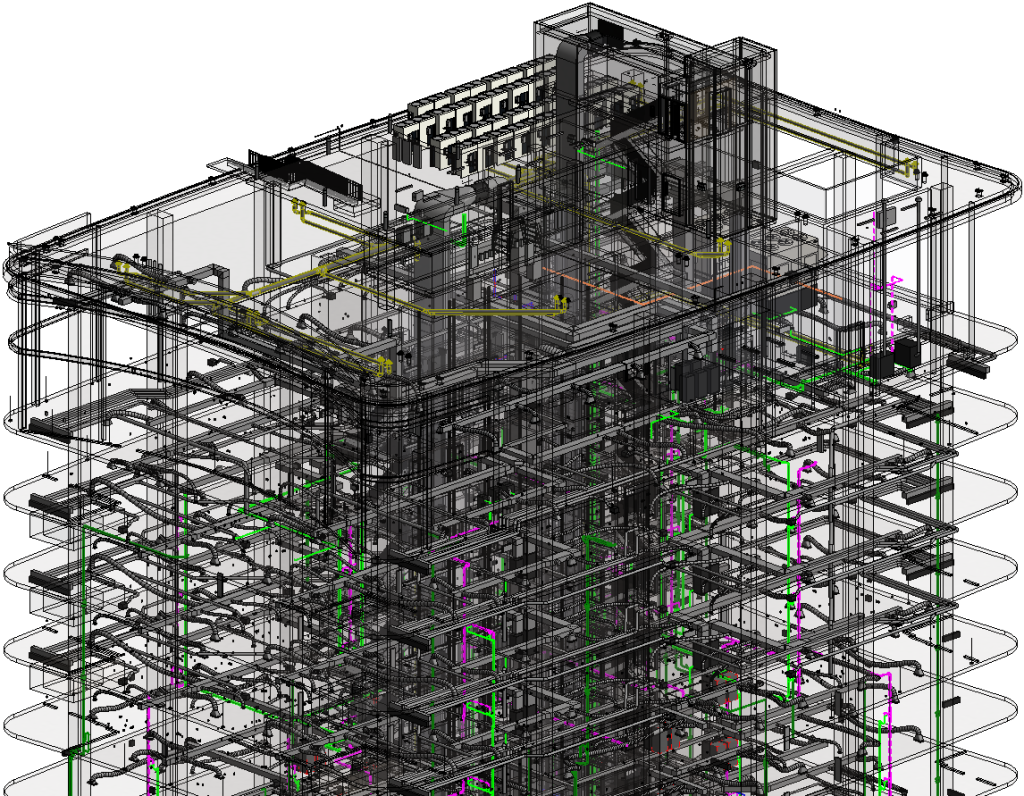DBR has transitioned to cloud-based collaboration for all BIM projects, which includes most of our projects. We are also using the Autodesk Revit Cloud Work-sharing and associated applications for observation reports.
DBR began using BIM 360 Teams in 2016 and since then, the firm has transitioned to BIM 360 Design allowing us to not only have one source of truth for our documents but also allowing us to collaborate live and in real-time with other consultants. BIM 360 Design removes our dependency on local servers and the stress of replicating documents from one server to the other with minimal or no IT assistance.
With the onset of COVID-19, DBR was able to quickly transition 90% of our design staff to work from home with almost no major hurdles while working in Revit or AutoCAD. Moving to BIM 360 Design has noticeably increased the open & sync wait time allowing our design staff to focus more on design rather than the dreaded lag times due to buffering. Sharing information internally and with our clients is easier and safer than ever. DBR and our clients can depend on AWS redundancy (Amazon Web Services) and always have real-time documentation.



Linking: 100% of DBR Revit projects are in BIM 360, and 30%-35% of those projects are hosted by our client’s HUB, with the hope to increase this percentage soon. With BIM 360 Design our clients have multiple options when linking (collaborating) Revit models all with their own advantages. 99% of DBR’s projects, when hosted to a client’s HUB, are done by Live Linking allowing our designers the advantage of having real-time information from all consultant models and vice versa.
Permissions: Having all consultants in one platform and accessing documents was a challenge in the old BIM 360 Teams platform. BIM 360 Design has made crucial improvements to permissions allowing the host to assign specific permissions to companies, individuals, and specific folders containing our data. With these improvements, clients can be confident their documents are safe, and they maintain full control of their data. With unlimited storage and multiple backup options, both the host and guests can reduce rework in the event someone makes a mistake.
Clash Detection: As DBR continues to make improvements and provide our clients with quality work our PMs and design staff will focus more on consistently executing early clash detections to reduce in-house and on-field rework while improving the QA/QC process. Navisworks will be used for traditional collaboration projects, and to further improve collaboration DBR will transition to Model Coordination (cloud clash detection) a BIM 360 service that performs live clash detections (more to come on this topic). Additionally, Bluebeam Studio will also be DBR’s workflow solution to coordinate PDF markups and assigning accountability to the process.
DBR is constantly looking at ways we can improve our client experience and we invite new ideas and technologies to enhance the collaboration process.
If you are interested in learning more about BIM 360, our approach to cloud-based collaboration, and/or assistance with setting up a BIM execution plan, please contact Wilfredo Ramirez, Director of BIM.

